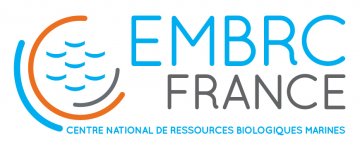Yannick Labreuche
Scientist of Ifremer
Researcher IFREMER

Cadre de Recherche (C2A IFREMER)
Yannick Labreuche has initially worked on the role of a marine bacterium (Vibrio aestuarianus) in Crassostreae gigas oyster infections. Having characterized a virulence factor involved in the infection process and studied the cellular interactions between this pathogen and the host defense mechanisms(PhD, 2002-06) he kept exploring the host/pathogen interactions in marine invertebrates by identifying several components of the RNA interference machinery in the shrimp Litopenaeus vannamei and assessing their involvement in the host response to viral infections (post-doctoral fellowship, 2007–08).He then focused his research by looking at the virulence mechanisms of vibrios pathogenic to shrimp and oysters, first as group leader of the “Pathogens, Infections, Epidemiology” team at the Ifremerresearch facility in New-Caledonia (2008-12) and later by joining the “Genomic of Vibrio” team at themarine biological station in Roscoff (2012–now). His work has highlighted the importance of developing approaches associating the characterization of the virulence attributes of the pathogen and the study of the damage resulting from the host-microbe relationship, through functional and comparative genomics, experimental infections, cellular and molecular biology as well as protein biochemistry to understand these diseases, whose economic and environmental consequences affect many countries in temperate, tropical and sub-tropical areas.
EMPLOYMENT AND EDUCATION
2012 – Researcher, Marine station of Sorbonne University, Roscoff. France
2008 –2012. Researcher, group leader of the “Pathogens, Infections, Epidemiology” team,Ifremer, New-Caledonia
2007 – 2008. Postdoctoral research fellow with Pr Greg W. Warr, Hollings Marine Laboratory, Medical University of South Carolina, USA. Research project: “Involvement of the RNAi pathway in the shrimp immune response to viral infections”
09/2006. Ph.D. degree (microbiology), Institut Universitaire Européen de la Mer, Université de Bretagne Occidentale , Brest. France. Title: Characterization of the virulence of a strain of Vibrio aestuarianus, pathogen of the oyster Crassostrea gigas
06/2002. Master degree (Integrative Biology of Invertebrates), Université Pierre & Marie Curie, Paris VI, Paris. France
06/1999. Agricultural engineer, Ecole Supérieure d’Ingénieurs et de Techniciens pour l’Agriculture, ESIPTA, Rouen. France
Publications
SELECTED PUBLICATIONS
1- Oyanedel D, Labreuche Y, Bruto M, Amraoui H, Robino E, Haffner P, Rubio T, CharrièreGM, Le Roux F and Destoumieux-Garzón D. Vibrio splendidus O-Antigen structure: A tradeoff between virulence to oysters and resistance to grazers. Environ Microbiol. 2020 Mar 26. doi: 10.1111/1462-2920.14996.
2- Piel D, Bruto M, James A, Labreuche Y, Lambert C, Janicot A, Chenivesse S, Petton B, Wegner KM, Stoudmann C, Blokesch M, Le Roux F. Selection of Vibrio crassostreae relies on a plasmid expressing a type 6 secretion system cytotoxic for host immune cells. Environ Microbiol. 2019 Aug 7. doi: 10.1111/1462-2920
3- Rubio T, Oyanedel-Trigo D, Labreuche Y, Toulza E, Luo X, Bruto M, Chaparro C, Torres Bejar M, de Lorgeril J, Haffner P, Vidal-Dupiol J, Lagorce A, Petton B, Mitta G, Jacq A, Le Roux F, Charrière G and Destoumieux-Garzón D1. Species-specific mechanisms of cytotoxicity towards immune cells determine the successful outcome of Vibrio infections. Proc Natl AcadSci U S A. 2019 Jul 9;116(28):14238-14247.
4- Bruto M, Labreuche Y*, James A, Piel D, Chenivesse S, Petton B, Polz MF, Le Roux F. Ancestral gene acquisition as the key to virulence potential in environmental Vibrio populations. ISME J. 2018 Dec;12(12):2954-2966 (* first co-author)
5- Labreuche Y, Chenivesse S, Jeudy A, Le Panse S, Boulo V, Ansquer D, Pagès S, Givaudan A, Czjzek M, Le Roux F. Nigritoxin is a bacterial toxin for crustaceans and insects. Nat Commun.2017 Nov 1;8(1):1248.
6- Bruto M, James A, Petton B, Labreuche Y, Chenivesse S, Alunno-Bruscia M, Polz MF, Le Roux F. Vibrio crassostreae, a benign oyster colonizer turned into a pathogen after plasmid acquisition. ISME J. 2017 Apr;11(4):1043-1052.



